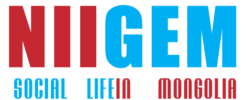Herders are no longer able to afford fodder, food, and medicine
December 19, 2020A survey was conducted on the supply of food, medicine, and health services to herders in response to the outbreak of Covid-19. According to the study, 23 percent of herders are not financially able to afford food. However, 68 percent have adequate food supply.
Herders in Arkhangai, Dundgovi, and Zavkhan aimags who could not afford to buy food were affected by the financial crisis because they could not sell their livestock on the market. Also, 66 percent of herders have not been able to sell meat and hides to the market.
Seventy percent of herders have access to health care, 21 percent do not, and 9 percent are financially insolvent. In some soums of Zavkhan, Gobi-Altai, Arkhangai, and Dundgovi aimags, herders have limited access to health and medical services. Also, a small percentage of herders are unable to afford medicines due to the financial crisis.
This is stated in a study by the Mongolian Pastureland Users Association. The association surveyed winter conditions from 9 to 13 of this month. The study also provided a dzud risk assessment at the local level. In particular, 75 soums in eight images are at risk of dzud. High motor migration in Arkhangai, Bayankhongor, Gobi-Altai, Dundgovi, Zavkhan, Uvurkhangai, and Umnugovi aimags increases the risk of severe winters. It is estimated that 18.5 million livestock from 44,783 households will spend the winter in the slums of these eight images. Of these, 8,000 households or 19 percent, a total of 4.3 million livestock or 27.1 percent are grazing.
Also, a fodder supply survey found that 20 percent of herders have run out of fodder, and 12 percent are unable to afford it. Sixty-six percent criticized the high price of hay.
Most of the herders who cannot afford to buy fodder are from Gobi-Altai aimag. Therefore, herders believe that increasing grass availability will help them overcome the dzud with less danger.


